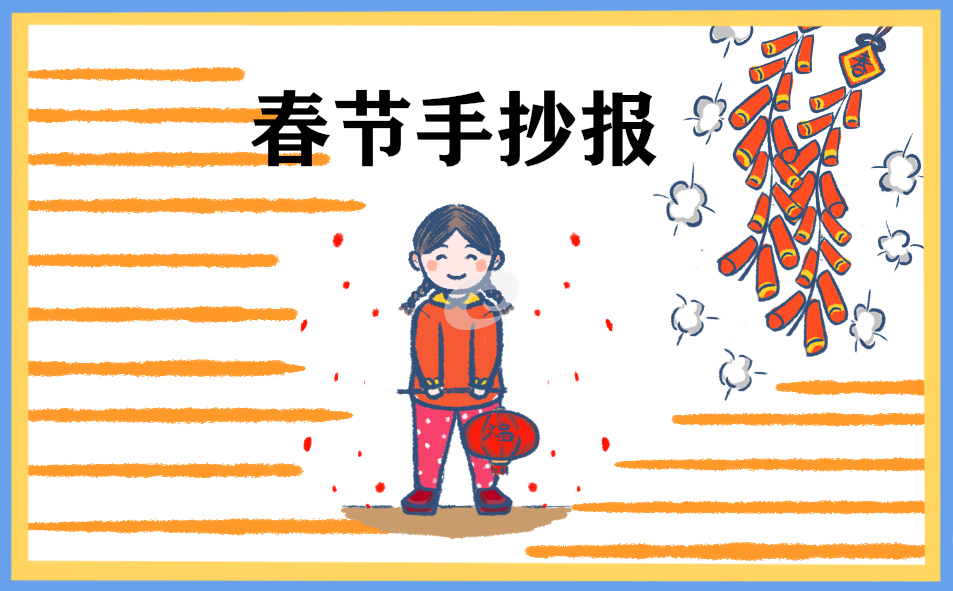GRE写作分数如何计算,一起来看看吧,下面小编就和大家分享,来欣赏一下吧。
GRE写作分数计算
新GRE写作的两个部分怎么算分?GRE写作的记分方式是这样的,两篇作文总分都是六分,计算公式为你的得分=(Issue的得分+Argument的得分) 2,最终的计分是以0.5分为一个格。
GRE考试逻辑写作包括两个不同的部分:
1.Issue task(30min),要求作者根据所给题目,完成一篇表明立场的逻辑立论文。
2.Argument task(30min),要求考生分析所给题目,完成一篇驳论文,指出并且有力的驳斥题目中的主要逻辑错误。
新GRE作文两个部分是如何算分的?
首先GRE写作两个部分在总分中的权重是一样的。新GRE作文中有两个项目,最后出的GRE作文分数是一个,所以如何进行GRE作文算分呢?
由于AA的写作不牵涉自己观点的展开,只须指出作者逻辑上的漏洞,因此在经过训练以后,写起来并不困难;而AI的写作需要自己展开自己设立的观点,不但需要逻辑上的洞察能力,还需要论证观点的能力,语言组织的能力,因此对于中国考生来讲比较困难,难以短期内有较大提高。
但是这两个部分在总分中的权重是一样的,因此考生的策略应该是尽量提高AI部分的写作能力而力保AA部分满分(或高分)。因为如果AA部分满分的话,AI部分只需争取在4分以上就可以保证整体作文分数在5分以上。
ETS的评分标准以及作文分数的计算
参照ETS评过分的范文,我们不难发现:无论是ISSUE还是ARGUMENT在评分标准上都有共同之处,即:
第一,观点要有深度,论证要有说服力;
第二,组织要有条理,表达清晰准确;
第三,语言流利,句式复杂,词汇丰富。
这三条分别说的是行文的“思想性”、“结构性”和“表达性”,众多高分作文的考生大凡都在这三个方面做得很好,我们理所当然也要从这里入手,采取“各个击破”的方法解剖GRE作文的本质,从而得到一个理想分数。GRE写作的记分方式是这样的,两篇作文总分都是六分,计算公式为你的得分=(Issue的得分+Argument的得分)/2,最终的计分是以0.5分为一个格。
新GRE写作要求考生在30分钟+30分钟内分别完成两篇文章,它是美国所有作文考试中时间最长而质量要求最高的一类作文考试。
更多关于GRE考试2014年终盘点及2015备考规划的内容,请关注新东方网GRE频道,也可通过下方二维码关注我们的微信平台(微信号:GRE-XDF)。
GRE issue写作优秀实例:伟大含义的判定
题目:
The greatness of individuals can be decided only by those who live after them, not by their contemporaries."
一个人是否伟大是由后人评定的而非他同时代的人。
正文:
When it comes to the evaluation of a historical figure, we cannot resist the temptation to wonder who is the final judge to decide his contribution and greatness and thus attribute him with lasting value. The speaker claims that it is the duty of those who live after them to decide. I concede that in certain areas, especially in scientific field where the significance of one hypothesis or invention has to be tested and retested by later followers to justify its correctness and accountability. In areas, such as art and business, it is possible to demonstrate one’s greatness and collect recognition by his contemporaries.
In the field of art, we observe numerous examples convincing us that contemporaries do endow those great achievers with respect and recognition. It is true that originality is always what innovative artists crave for and thus make it impossible for ordinary people or even veteran art critic to appreciate. The paintings of Van Gush ran contrary to the wide-accepted norm and thus relegated by critics as indecipherable and bewildering. Even Shakespeare, the greatest writer we have in history was criticized by some literature critics as treacherous and a fancy exhibitor. But we need look no further than Mark Twain to justify how possible it is for an individual to be accepted by his counterpoise. Twain’s vivid description of life on Mississippi River won him immediate fame as the most popular writer in American history and the happy ending is that a yesterday sailor became today’s successful and rich writer.
The same case occurs in business world. Unlike the process of art creation, which is an interaction between artists who send the message and the audience who receive and interpret the message, business executives aim at a more practical and direct ending, that is to say, to maximize profit, make the best use of shareholder’s investment and increase the well being of company stuff. Admittedly, some strategies executed by business leaders might seem labyrinthine at first sight to some outsiders, but as long as the goal of the enterprises are being successfully met with respect the proper function of business, neat organization of internal structure and a consistent contribution to the well being of neighborhood, community and government budget, it pose no threat to people’s understanding how great these leaders are. By introducing new production streamline, the founding father of Ford is immediately recognized and accoladed as a successful businessman with true innovative idea and cute business sense and vision. Bill Gates, giant in hi-tech industry, is ranked as the most successful businessman due to the huge success he brought to the Microsoft as well as the contribution he made to the entire industry.
But in the scientific arena, less fortunate stories are revealed. Since no scientific findings can stand as everlasting, universally admitted truth free from doubt and suspicion, scientific discovery have to yield to time to be tested and retested to find where the true value lies. Scientists with truly innovative idea going against the wide-accepted doctrine are usually biased and prejudiced since to reform the deep-rooted and stubborn dogma in people’s head is a formidable job that would even as tough as the scientific discovery process itself. Einstein’s quantum theory,Copernicus’ discovery that the sun is the center of the universe instead of earth,Darwin’s claim that human being is evolved from other life forms instead of the creation of God all suffer the same fate as heresy and nonsense. It is the offspring who begin to evaluate these great discoveries from pure objective and scientific perspectives and name those scientists and their findings as significant and crucial.
To sum up, neither the contemporaries nor the later generations alone act as an efficient litmus stone to test to value of an individual. In the area of art and business where the value can be recognized according to the public reaction, economic gaining and so forth, it is possible to be recognized and get immediate distinctiveness. On the other hand, in the scientific field where people’s idea lag behind scientific vision, negligence often happens as a result of misunderstanding and unwillingness to change, in this sense, an individual has to wait even for centuries to be recognized as a great person.
GRE issue写作优秀实例:学科
题目:
Instead of requiring students to take courses in a variety of disciplines—that is, courses ranging from the arts and the humanities to the physical and biological sciences—colleges and universities should allow students to enroll only in those courses that will help prepare them for jobs in their chosen fields. Such concentration is necessary in today's increasingly work-oriented society.
与其要求学生们选修各种各样的学科——从艺术和人文科学到物理和生物科学——大学还不如允许学生们仅仅去选择那些有助于他们今后工作的学科。这种集中在当今这个工作至上的社会是必要的。
正文:
The above argument completely neglects the internal value and essence of college education. If it were put into effect, not only the education itself but also the whole society would undergo a severe devastation. Even for the sake of practicality, also it is not necessarily a good suggestion and will seriously mislead students in their future.
When it is concerned with the purpose and essence of education, at the beginning one must refer to the father of the Declaration of Independence, Thomas Jefferson, whose influence upon the American and world education has reached far into even today. One of his most famous apothegms about education is that the truly valuable education should be aiming at the improvement of both one’s “moralities” and “faculties”. Varying greatly though people’s understanding over this idea is over times, seldom did they suspect its justification and insightfulness. Therefore, it is safe to base our analysis upon this thought in order to determine whether students should be allow to enroll only in those work-oriented courses.
There is almost no escaping the fact that the purely vocation-oriented education is quite inconsistent with developing a lofty or decent moral in students. In traditional society, it was family and community that transmitted its basic values, conventions and moralities to children. As time goes by, however, this role and responsibility have been gradually shifted to schools and teachers, either for better or worse. If the whole education becomes completely vocation-oriented, the education of moralities is certain to become secondary for both schools and students, and the neglecting of moral education will become something sooner or later. That is to say, modern education system will fail to undertake the responsibilities that traditional family and community transmitted to it. To some extent, this is just what happens in many schools of many counties. As a result, when we continuously complain the decline in moralities, no one realizes that it intrinsically origins from the absence of roles to undertake the duty for moral education.
Also a work-oriented education contradicts fundamentally with the aim of improving “faculties”. Vocational education differs from academic education in that it lays more emphasis on the teaching of methods, techniques and specific knowledge, while the latter values more the nurturing of a profound, well-rounded intelligence and character. In a word, vocational education simply stuffs students with all kinds of practical “content”, which has little to do with improving “faculties”. By this education, maybe we will “produce” a larger number of qualified engineers or specialists, but really great thinkers like Newton, Einstein or Karl Marx would never come up. Obviously, such a vocational education aims at temporary mean benefits, far more than the long-term and actually valuable ones of human beings.
Furthermore, even when practical goals are involved, the work-oriented courses also are not necessary good choices for student. The rapid growth of modern science and technology makes professions ceaselessly changeable, new ones continuously emerging and old ones continuously disappearing. On this occasion, it is high likely that the “hot” courses for jobs today will become completely obsolete, unwelcome by market. Taking merely vocation-oriented courses, thus, means a higher risk for students. However, this kind of risk can be greatly avoided by non-work-oriented education, that is, academic education through which we can learn some “life skills”—skills including logic thinking, reasoning, synthesizing, and creative problem-solving. Undoubtedly, these personal faculties will never be out of date and can ensure a brilliant future for students who are excellent in these aspects.
In conclusion, there is always something that is perpetual in the nature of education, and it never changes with the change of people’s focus, interest or preference. The pursuit of education for moralities and faculties is certainly just such an epitome.Perhaps that is what we can learn from Thomas Jefferson and the above discussion.
GRE写作分数如何计算
下一篇:返回列表





